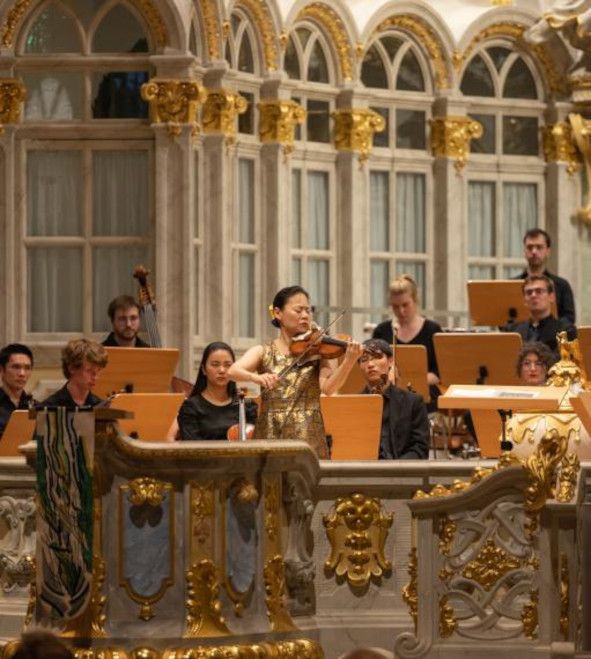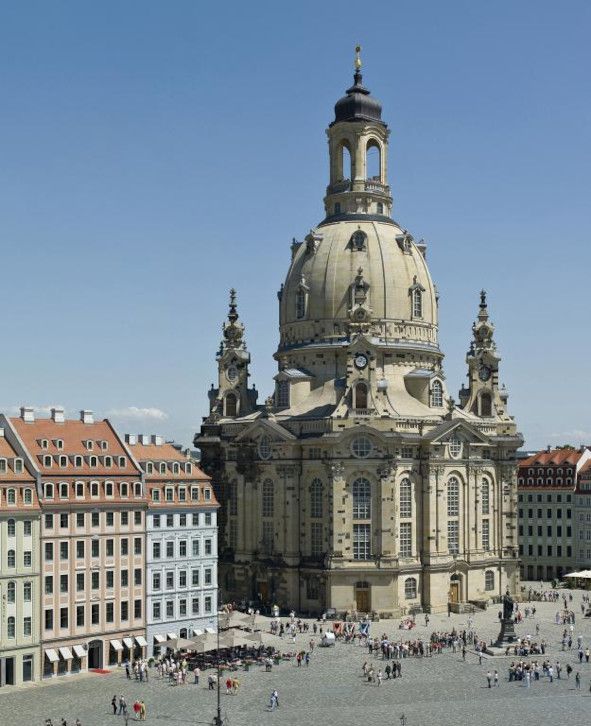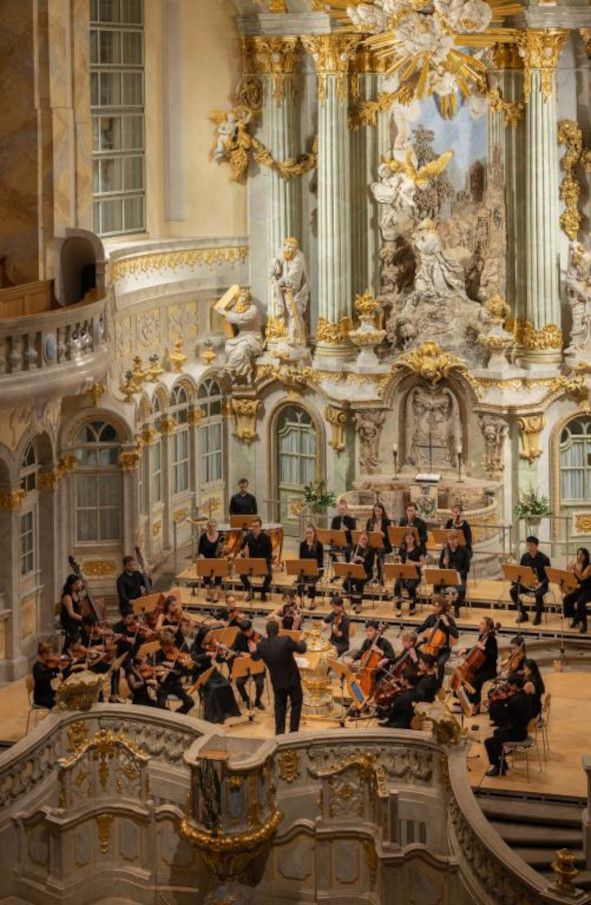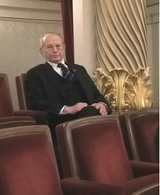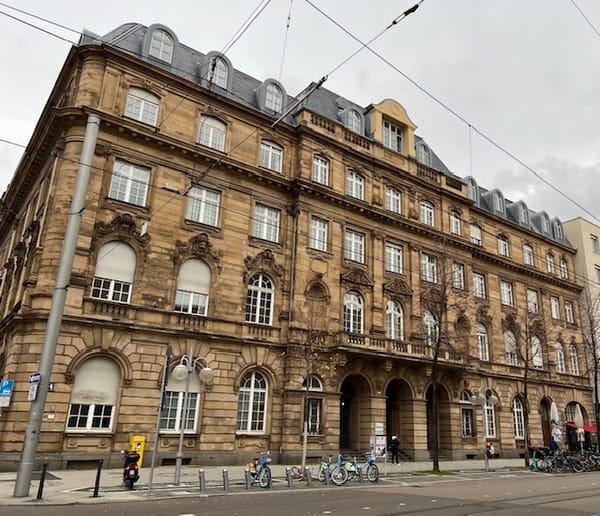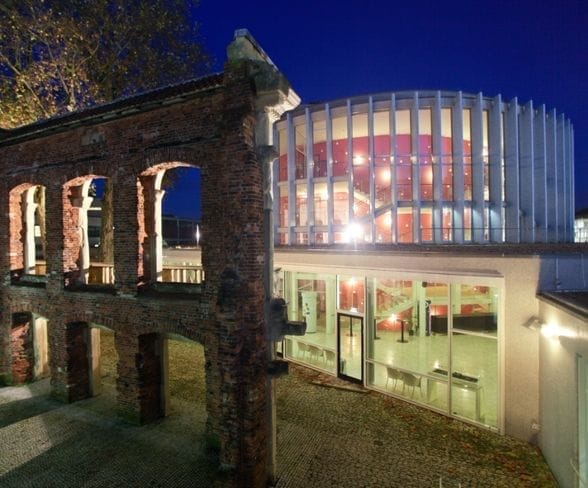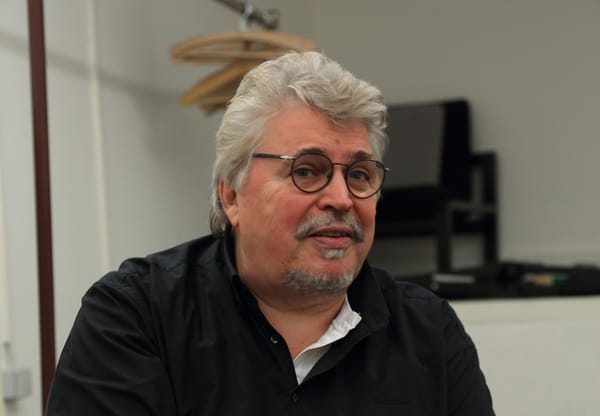Konzert
Dresden, Frauenkirche, MIDORI - 40jähriges Konzertjubiläum, IOCO Kritik, 15.08.2022
15 Aug. 2022
— 5 min read
Frauenkirche in Dresden © Joerg Schoener Frauenkirche Dresden MIDORI and the "Glory of Cremona" The Japanese star violinist MIDORI celebrates her fortieth concert anniversary by Thomas Thielemann In 1963, Italian-American violinist Ruggerie Ricci (1918-2012), assisted by Polish pianist Leon Pommers (1914-2001), featured 15 violins from Andrea Amati 's Cremona workshops in an LP recording " The Glory of Cremona ". (around 1505-1577), Gasparo da Salo (1540-1609), Nicola Amati (1596-1684), Antonio Stradivari (1648-1737), Carlo Bergonzi (1683-1747) and Guiseppe Guarneri del Gesù (1698-1744) combined with sound examples that he considered particularly suitable for the respective instruments. According to current estimates, the total value of the instruments would be well over ten million US dollars. Rucci supplemented this special feature with a 7" vinyl with short solo allusions to Max Bruch 's 1st violin concerto . Frauenkirche Dresden / MIDORI and its Guarneris by Gusi ex-Huberman © Oliver Killig Although I only have a compact disc and a few YouTube snippets of Ricci's recording at my disposal, I am happy to follow the accumulating assessments of many connoisseurs that the violin is " ex-Huberman " from the Guarneris workshop , especially in the allusions to fracture , in terms of complexity and overtones that outstripped the Stradivari phalanx. According to the Cozio archive number 40406 , the instrument was probably made in 1731 by Bartolomeo Guiseppi Guarneri . Guarneri was named “ del Gesù ” because of the IHS marking (lesum Habemus Socium= we have Jesus as a companion) on his labels ' (named by Jesus). Probably the most important violin soloist of the first half of the 20th century , Bronislaw Huberman (1882-1947), mainly played the instrument after his Stradivarius "Gilbert ex Gibson " from 1713 was stolen in 1936. Huberman , who characterized himself as a “ Pole, Jew, freelance artist and pan-European” , was the founder of the lead orchestra of the “ Israel Philharmonic Orchestra ”, but he also pushed through the boycott of Richard Wagner’s music in Israel in 1938. With the death of the theft fence Julius Altmann (-1986) received the Stradivarius regained their identity after half a century of anonymous service to salon music and orchestral engagements. By then Huberman had been dead for almost 30 years. The violin is currently being played by Joshua Bell as the Stradivarius "Gibson ex Huberman " after he was able to purchase the painstakingly reconstructed instrument for almost four million US dollars. After Huberman 's death, what Paul Caswell called the " Guarneri winning instrument" was taken over by the instrument maker and collector Rembert Wurlitzer (1904-1963) and sold from his collection to Ruggiere Ricci in 1956. The history of the " Guarneris del Gusì ex-Huberman " also includes the fact that in 1985 Rucci commissioned the instrument makers Gregg T Alf and Joseph Curtim to recreate the instrument with contemporary possibilities. In 2013, the successful replica was auctioned off by the instrument auction house “ Tarisio ” because of its sound quality for US$132,000, the highest price ever achieved for a violin by a contemporary instrument maker. The original instrument " Guarneris des Gusi ex-Huberman " was acquired by the " Hayashibara Family Foundation " around the turn of the millennium and made it available to the exceptional Japanese soloist Midori for life. Frauenkirche / conductor Josep Caballé Domenech, orchestra and MIDORI with their Guarneris by Gusi ex-Huberman © Oliver Killig On December 30, 1982, eleven-year-old Gotö Midori made her public debut as a violin virtuoso at a New York Philharmonic concert . With an iron striving for perfection, but repeatedly plagued by feelings of inferiority and self-doubt, the young woman developed an incomparable solo career as " MIDORI ". After crises of depression and anorexia, she managed to regain stability and confidence again and again, so that she can prepare her fortieth stage anniversary with a world tour at the end of the year. On August 13, 2022, she stopped by at the Dresden Frauenkirche to present herself with the Violin Concerto in D major by Johannes Brahms and the fantastic Guarineri ex-Huberman together with the Moritzburg Festival Orchestra . In 2006, at a concert in Braunschweig, we found Midori to be a reserved young woman who almost subordinated herself to the conductor and orchestra, and who was able to impress her audience above all with her virtuosity. In the fortieth year of her concert career, we experienced a soloist who, alongside the orchestra, self-determinedly resisted the dangers of sound development in the dome building. According to reports, the avowed pianist Johannes Brahms (1833-1897) wrote his violin concerto in the summer of 1878 in Pörtschach am Wörthersee, where " the melodies just lie around ". At the same time, the 45-year-old, who until then had always been clean-shaven, decided to only show himself to his followers with a full beard in the future. Something happened to the man in his mid-forties that musicology has yet to explain to us. At the very least, the composer wanted to present his attempt at a violin concerto on a tour, but his friend Joseph Joachim (1831-1907) arranged the matter in such a way that the concerto had to be presented in Leipzig , which was the center of the music world at the time. Brahms chatted away during a visit before the concert, so he didn't have enough time to change. The creator of the work stood in the Gewandhaus on January 1, 1879, with his trousers slipping and his shirt in a mess, and at first he could only report a moderate success for his D major Violin Concerto . It was only weeks later that Eduard Hanslick (1825-1904) introduced the success of Brahms' Opus 67 by placing it in a series of Beethoven and Mendelssohn violin concertos. There, where we still see it because of its lyrically cheerful, heartfelt expression, its classic balance and its perfection of style. The introduction to the Brahms Violin Concerto by the Moritzburg Festival Orchestra entered the Frauenkirche almost mysteriously and triggered immediate expectations and emotions. But already the first subtleties of the prelude are covered by the reverberation. The Midori 's solo violin tried in vain to blend in with the orchestral sound in order to take over from the band's strings. So it became clear that we have to focus on the wonderful instrument if we want to take something away from the concert. The experienced technician, equipped with filigree instrumental art and high assertiveness, formed the melodic lines of the score in a bright, shiny and richly nuanced way. She took her time playing the first movement in particular and always tried to preserve the clarity of the sound and the purity of the melodic lines. The full, somewhat darker sound of the Guarneris violin supported her most admirably. With her Adagio interpretation , Midori tried again and again to open up interpretation spaces in order to discover hidden beauties. Her playing had some beautiful, delicate twists that led to rare intimacy. Almost in opposition, she used the folklore-tinged finale to express her general sense of joy and energy. The evening's conductor, the Catalan Josep Caballé Domenech , had preferred an open approach to the orchestral accompaniment, dodging arguments with the soloist. His calmer and more skilful handling of the woodwind and string passages added to the overall impression. The acoustic conditions in the dome building did not allow for trumpeting tutti passages. The soloist Gotö Midori was enthusiastically celebrated by the visitors of the concert and thanked her with an encore.
The performance of Beethoven's seventh symphony in A major , which was announced in the second part of the concert, could only become problematic due to the sound development in the church room. ---| IOCO Kritik Frauenkirche Dresden |---
